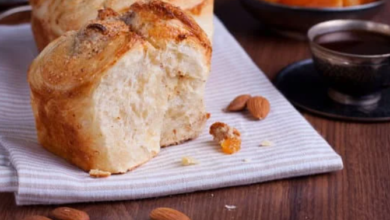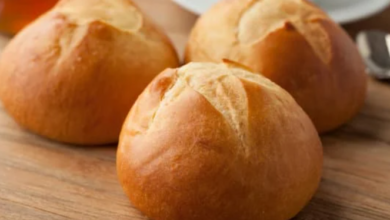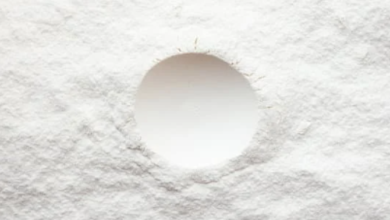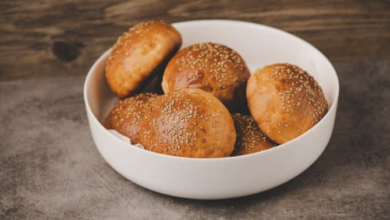Why My Brioche Dough Is Not Browning: A Surprising Reason
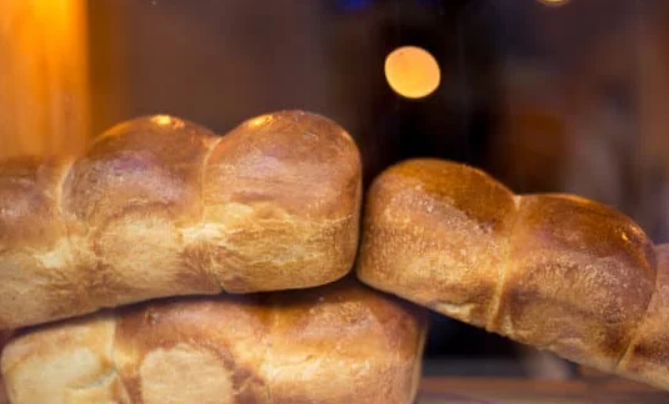
What To Know
- The key to understanding brioche browning lies in the Maillard reaction, a chemical process that occurs when amino acids and sugars interact in the presence of heat.
- During baking, the proteins in the flour react with the natural sugars in the dough, resulting in the formation of melanoidins, which give brioche its characteristic brown color and rich flavor.
- Applying an egg wash to the brioche before baking helps promote browning by providing a barrier that traps moisture and allows the Maillard reaction to occur more efficiently.
Brioche, the quintessential French pastry, is renowned for its golden-brown crust and fluffy interior. Yet, sometimes, even the most skilled bakers encounter a perplexing dilemma: why is my brioche not browning? This culinary enigma can leave you scratching your head and wondering what went wrong. Fear not, for this comprehensive guide will delve into the science behind brioche browning and provide practical solutions to restore your pastries’ radiant glow.
The Science of Brioche Browning
The key to understanding brioche browning lies in the Maillard reaction, a chemical process that occurs when amino acids and sugars interact in the presence of heat. During baking, the proteins in the flour react with the natural sugars in the dough, resulting in the formation of melanoidins, which give brioche its characteristic brown color and rich flavor.
Factors Influencing Brioche Browning
Several factors can influence the browning of brioche, including:
1. Oven Temperature
Baking temperature plays a crucial role in browning. Too low a temperature will prevent the Maillard reaction from occurring, while too high a temperature can burn the brioche. The optimal temperature for brioche baking is between 375-400°F (190-204°C).
2. Baking Time
The duration of baking also affects browning. Underbaking will result in a pale brioche, while overbaking can dry out the pastry and compromise its texture. The baking time will vary depending on the size and shape of the brioche, but typically ranges from 20-30 minutes.
3. Egg Wash
Applying an egg wash to the brioche before baking helps promote browning by providing a barrier that traps moisture and allows the Maillard reaction to occur more efficiently. An egg wash made with one egg yolk and one tablespoon of water or milk is ideal.
4. Sugar Content
The amount of sugar in the dough also influences browning. A higher sugar content will result in a darker brioche, as more sugars are available to react with the proteins. If your brioche is not browning sufficiently, consider adding a tablespoon or two of sugar to the dough.
5. Baking Surface
The surface on which you bake the brioche can also affect browning. A dark baking sheet or baking stone will absorb more heat and promote browning. Alternatively, a light-colored baking sheet may reflect heat, resulting in a paler brioche.
6. Yeast Activity
Active yeast is crucial for the Maillard reaction to occur. If your brioche is not browning, check the freshness of your yeast and ensure it has been activated properly before adding it to the dough.
7. Dough Formation
Proper dough formation is essential for even browning. Over-kneading can develop the gluten too much, resulting in a tough and chewy brioche. Under-kneading, on the other hand, can lead to a weak and crumbly pastry. Aim for a dough that is smooth and elastic.
Troubleshooting Brioche Browning Issues
If your brioche is not browning, try the following troubleshooting tips:
- Increase the oven temperature: Raise the oven temperature by 25°F (14°C) increments and bake for an additional 5-10 minutes.
- Extend the baking time: Bake the brioche for an additional 5-10 minutes, or until it reaches an internal temperature of 190°F (88°C).
- Apply an egg wash: Brush the brioche with an egg wash before baking.
- Add sugar to the dough: Increase the sugar content of the dough by a tablespoon or two.
- Use a dark baking surface: Bake the brioche on a dark baking sheet or baking stone.
- Activate the yeast properly: Ensure the yeast is fresh and has been activated properly before adding it to the dough.
- Adjust the kneading time: Knead the dough for the appropriate amount of time to achieve a smooth and elastic texture.
Beyond the Maillard Reaction: Additional Browning Techniques
In addition to the Maillard reaction, there are a few other techniques you can employ to enhance the browning of your brioche:
- Use diastatic malt powder: This enzyme helps convert starches into sugars, providing more fuel for the Maillard reaction.
- Add a small amount of baking soda: Baking soda promotes browning by raising the pH of the dough.
- Sprinkle with granulated sugar: Just before baking, sprinkle the brioche with granulated sugar to create a caramelized crust.
Key Points
Baking brioche is an art form that requires precision and attention to detail. By understanding the science behind browning and troubleshooting common issues, you can conquer the brioche browning enigma and create pastries that are not only delicious but also visually stunning. Remember, the journey to perfect brioche is an ongoing one, and with practice and experimentation, you will master the art of achieving that golden-brown glow.
Frequently Asked Questions
Q: Why is my brioche browning too much?
- A: The oven temperature may be too high, or the baking time may be too long. Adjust the temperature or reduce the baking time to prevent excessive browning.
Q: Why is my brioche not browning evenly?
- A: The dough may not have been mixed thoroughly, or the brioche may not have been shaped properly. Ensure the dough is well-mixed and shaped evenly before baking.
Q: Why is my brioche browning on the outside but not the inside?
- A: The oven temperature may be too low, or the baking time may be too short. Increase the oven temperature or extend the baking time to ensure the brioche is cooked through.
